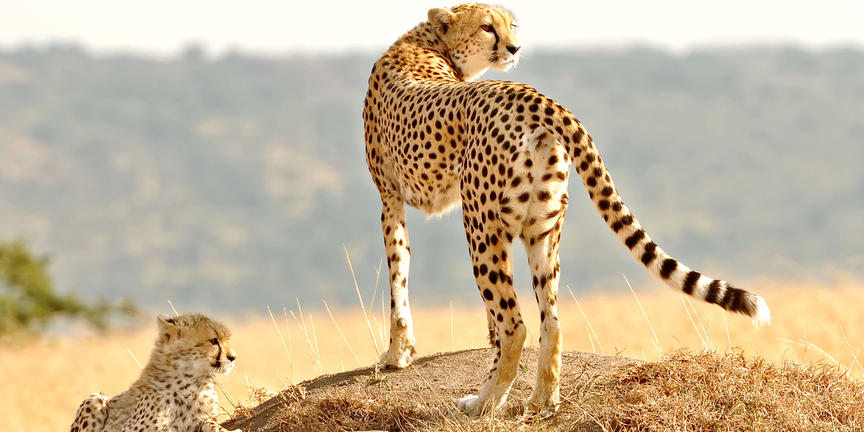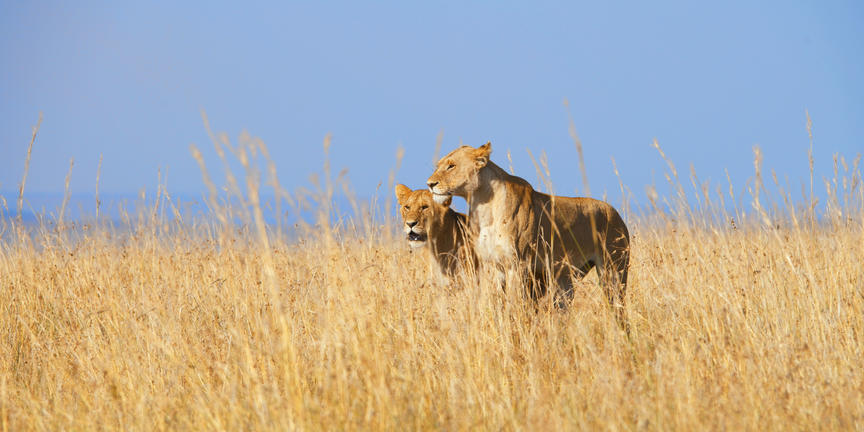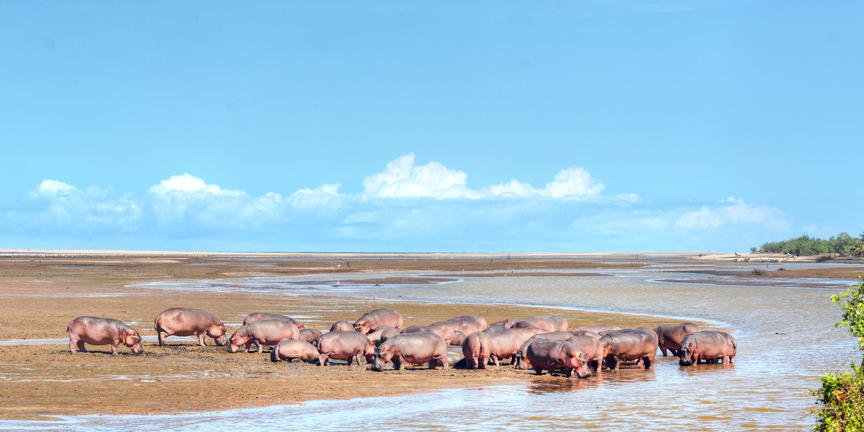Masai Mara National Reserve – Kenya’s Iconic Safari Heartland
The Masai Mara National Reserve is one of Africa’s most spectacular wildlife destinations, a vast expanse of savannah, acacia woodland, and rolling plains that captures the essence of Kenya’s safari heritage. Covering over 1,500 square kilometres in the country’s southwestern region, the reserve forms the northern extension of Tanzania’s Serengeti ecosystem, together creating one of the most productive and celebrated wildlife areas on Earth.
The Masai Mara’s sweeping landscapes teem with life year-round — from massive herds of plains game to apex predators — and it remains the stage for one of nature’s most breathtaking spectacles: the Great Wildebeest Migration.
Location and Ecosystem – Southwestern Kenya
The Masai Mara National Reserve lies about 270 kilometres (5–6 hours’ drive) west of Nairobi, within Narok County, bordering Serengeti National Park to the south. The reserve’s diverse ecosystem includes open grasslands, riverine forests, and acacia-dotted savannahs, all sustained by the Mara and Talek Rivers that meander through the park.
The fertile plains and permanent water sources attract an incredible concentration of wildlife, making the Mara one of the most reliable year-round game-viewing destinations in Africa.
Unique Features
The Great Wildebeest Migration: Often called the “Greatest Wildlife Show on Earth,” this natural phenomenon sees around 1.7 million wildebeest, accompanied by hundreds of thousands of zebras and gazelles, cross the Mara River between July and September from the Serengeti in search of greener pastures.
Big Five Territory: The reserve is home to elephant, lion, leopard, buffalo, and rhino, offering one of the best chances in Africa to see all five in one place.
Predator Paradise: Lions, cheetahs, leopards, and hyenas thrive here, with frequent sightings — especially during the migration when prey is abundant.
The Mara River: Flowing through the reserve, it is home to hippopotamuses, crocodiles, and dramatic river crossings during the migration.
Rich Birdlife: With over 450 recorded species, the Mara is a birdwatcher’s paradise, featuring lilac-breasted rollers, ostriches, crowned cranes, and raptors like the martial eagle.
Masai Culture: The surrounding Maasai communities maintain their traditional pastoral lifestyle, offering cultural visits that reveal the deep connection between people, cattle, and land.
Activities in the Area
The Masai Mara offers a range of unforgettable safari experiences suitable for all types of travellers:
Game Drives: Experience early morning and sunset safaris across the plains in search of lions, elephants, and wildebeest herds.
Hot Air Balloon Safaris: Drift above the Mara at sunrise for a breathtaking aerial view of the landscapes and wildlife below.
Walking Safaris: Accompanied by Maasai guides, explore the bush on foot for an intimate look at the ecosystem’s smaller wonders.
Cultural Visits: Visit a Maasai manyatta (village) to learn about local traditions, beadwork, and the community’s coexistence with wildlife.
Birdwatching: Discover the park’s rich avifauna along the rivers and woodlands, home to rollers, eagles, vultures, and waterfowl.
Photography Safaris: The Mara’s vast skies, golden light, and dramatic animal interactions make it a paradise for wildlife photographers.
Travel Information
How to Get There
By Road: Approximately 270 km (5–6 hours) west of Nairobi, accessible via Narok or Sekenani Gate. The journey offers scenic views of the Great Rift Valley.
By Air: Daily scheduled flights from Nairobi’s Wilson Airport to Mara’s airstrips (Keekorok, Ol Kiombo, Musiara, etc.) take about 45 minutes.
Travel Distances
Nairobi → Masai Mara: ~270 km / 5–6 hours
Masai Mara → Lake Nakuru: ~5 hours (250 km)
Masai Mara → Serengeti National Park (via Isebania Border): ~3 hours
Masai Mara → Amboseli National Park: ~6–7 hours (400 km)
Best Time to Visit
Dry Season (July – October): Peak of the Great Migration, offering spectacular game viewing and river crossings.
Wet Season (November – June): Lush landscapes, fewer tourists, and excellent year-round resident wildlife viewing — ideal for birdwatching.
Why Include Masai Mara in Your African Safari
The Masai Mara National Reserve is Kenya’s flagship safari destination — a place where the rhythms of the wild play out in breathtaking drama. From the thunder of the Great Migration to the quiet moments of sunrise over the plains, the Mara delivers some of the most intense, authentic, and beautiful wildlife encounters on the continent.
Whether you come for photography, adventure, or simply to witness nature in its purest form, the Masai Mara stands as the ultimate expression of Africa’s untamed spirit.
Key Attractions
The Great Wildebeest Migration (July – September)
Big Five and Predator Sightings Year-Round
Mara River – Crocodiles and Hippos
Over 450 Bird Species
Hot Air Balloon Safaris
Cultural Visits to Maasai Villages
Scenic Plains and Golden Savannah Landscapes
Connection to Serengeti National Park (Tanzania)









